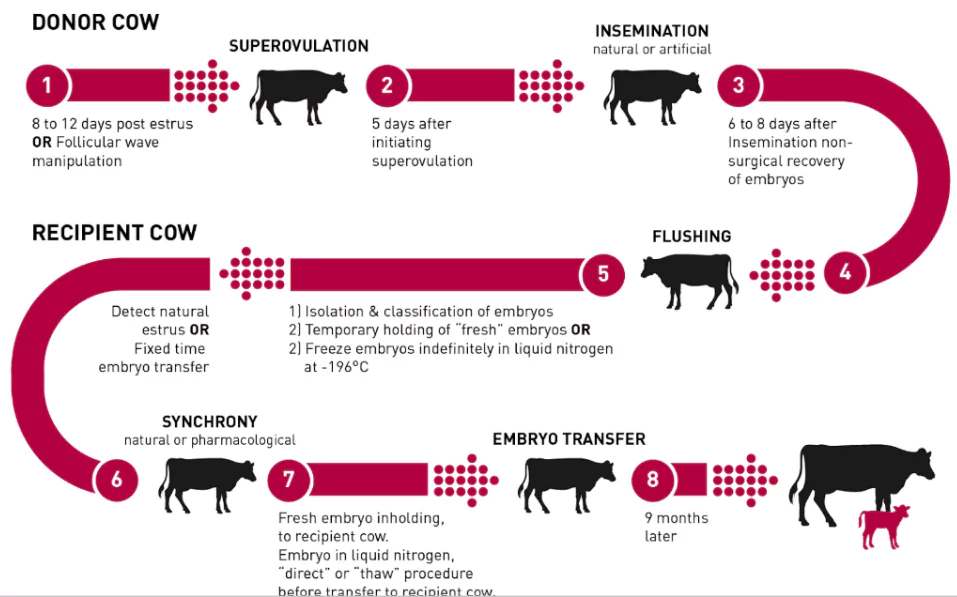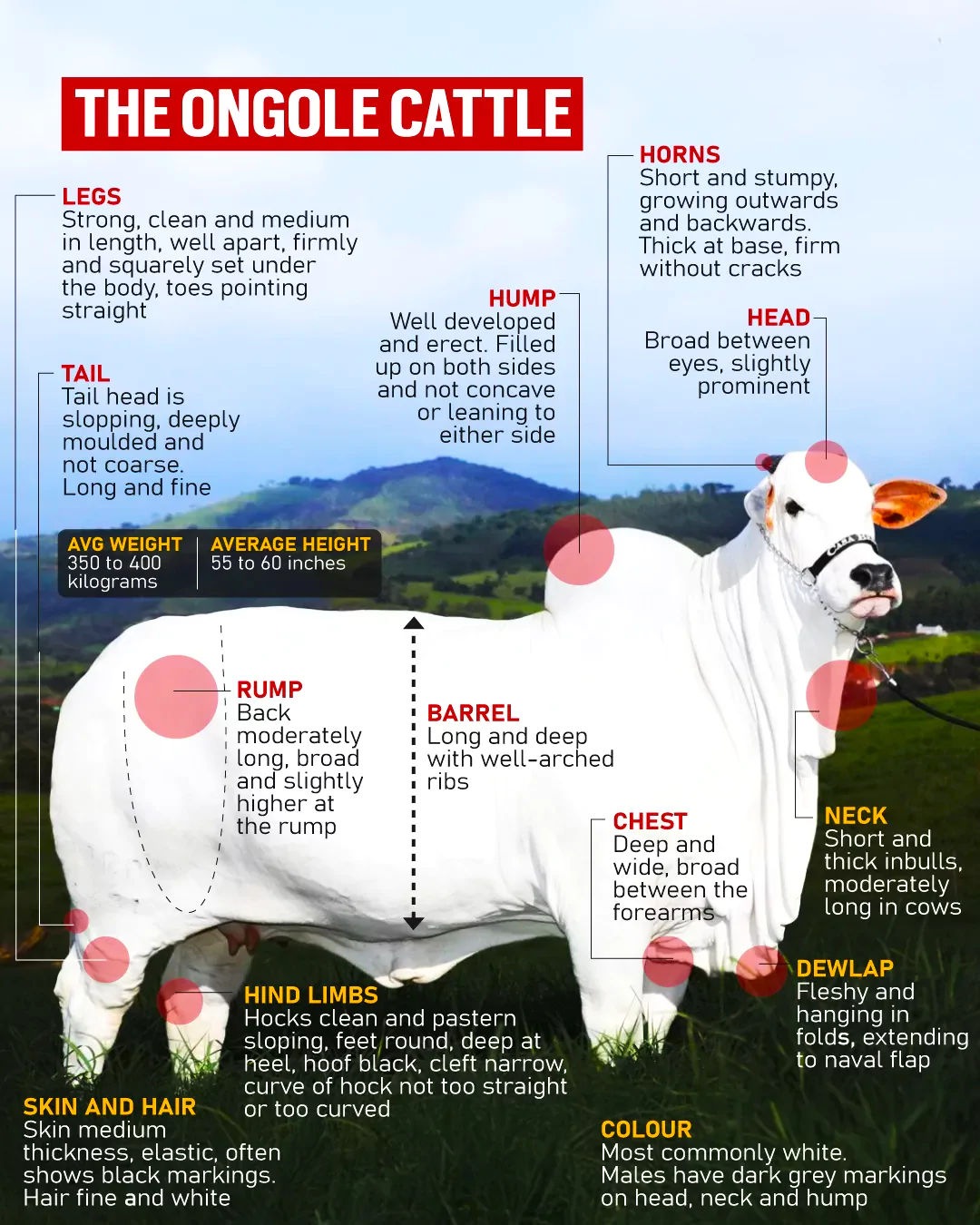
Recently, an event occurred in which a purebred Ongole calf was born at the Livestock Research Station LAM Farm, Guntur, Andhra Pradesh.
The birth was facilitated through IVF-embryo transfer technology.
About The Ongole cattle
- Ongole cattle, also known as Ongolu Gitta, are a native Indian breed.
- They originate from Prakasam District, Andhra Pradesh.
- The breed is named after Ongole, the region where it was first developed.
- Classified under Bos indicus, Ongole cattle are highly valued for their disease resistance.
 Unique Features and Global Demand
Unique Features and Global Demand-
- Known for their resistance to foot and mouth disease and mad cow disease.
- Highly sought after worldwide due to their strength and resilience.
- Frequently used in bullfighting competitions in Mexico and parts of East Africa.
- In India, they participate in traditional bullfights in Andhra Pradesh and Tamil Nadu.
- Farmers assess bull strength and purity during these competitions for breeding selection.
- Recognition and Cultural Importance
- The 2002 National Games of India featured an Ongole bull named Veera as the mascot.
The Ongole Breed in Brazil vs India
-
Ongole Cattle in Brazil
- The breed is highly valued in Brazil, where 80% of the country’s 226 million cattle are Ongoles.
- In February, an Ongole purebred cow, Viatina-19, was auctioned for $4.38 million USD (~₹40 crore).
- Brazilian breeders focus on breeding bigger, meatier cattle for export markets.
- Ongoles are used primarily for meat production, contributing significantly to Brazil’s beef export industry.
-
Ongole Cattle in India
-
- Ongole numbers have drastically reduced from 15 lakh in 1944 to 6.34 lakh in 2019.
- Indigenous cattle in India have declined by 9% (2007-2012) and 6% (2012-2019).
Conservation Challenges in India
- Farmer Preferences
- Despite the Rashtriya Gokul Mission (RGM) (2014) promoting desi breeds, farmers prefer:
- Exotic & crossbred cattle due to higher milk yield.
- Their population increased by 29.5% (2012-2019) from 39.73 million to 51.47 million.
- Advantages of Ongole Cattle
- Farmer-friendly cattle: Adapted to Indian climate, soil, and farming needs.
- High disease resistance and strength.
- Heat tolerance and ability to survive on low fodder.
- Cultural significance:
- Nandi bulls in Shiva temples resemble Ongole bulls.
- Historically, they played a vital role in India’s agrarian revolution.
Declining Milking Ability of Ongole Cattle
- Reasons for Decline
-
- Indian farmers selectively bred bulls for draught power (strength and size) rather than milk production.
- The Brahmini bull breeding system prioritized stamina over milk yield.
- Mechanization of agriculture reduced demand for bullock-driven farming.
![]() 10 Mar 2025
10 Mar 2025


 Unique Features and Global Demand
Unique Features and Global Demand